National Climate Assessment: Climate Change Pushing U.S. Toward Water Extremes
The Southwest is drying out, while the Northeast is becoming wetter.
By Codi Kozacek and Brett Walton
Circle of Blue
Extreme droughts and heavy rainfall events will become increasingly common by the end of the century and affect drinking water supplies, agricultural production, and energy production across the United States, according to the third National Climate Assessment released Tuesday. Overall, climate change is intensifying regional differences, with northern and eastern states predicted to face more floods while southern and western states suffer more droughts.
The NCA is a federally mandated report that looks at how climate change is affecting the United States. It is created through a collaboration of more than 200 scientists and is supposed to be released every four years, though this is just the third report since 2000.
“It’s the most comprehensive reporting on climate impacts in the U.S. to date,” Paul Fleming, manager of the climate and sustainability group at Seattle Public Utilities and a convening lead author for the water resources section of the NCA, told Circle of Blue.
“It’s the most comprehensive reporting on climate impacts in the U.S. to date.”
–Paul Fleming
Seattle Public Utilities
The assessment’s authors emphasize that climate change induced by human-emitted greenhouse gases is already evident in the U.S., and that the effects are being felt in every region. The report comes amid one of the worst droughts on record in California, a week after extreme flooding along the Gulf Coast, and just days after scientists confirmed that atmospheric carbon dioxide levels in April reached their highest monthly average ever recorded. It predicts that significant changes to water supply and demand will occur in decades, such as:
- A 40 percent loss of April snowpack—a key indicator of summer water supplies—that will affect the entire western U.S. except the northern plains by the 2050s.
- A 26 percent increase in water withdrawals nationally by 2050, compared to a 3 percent increase in the absence of climate change.
- An increase in heavy precipitation events across the country; a 1-in-20 event will be 1-in-5 to 1-in-15 by the end of the century.
- A 1 to 4-foot rise in sea levels by 2100, increasing saltwater intrusion into groundwater and surface water supplies.
In addition, sectors closely linked to water—such as agriculture and energy—will both pressure water supplies and be pressured by changes in water availability. For example:
- One quarter of existing power generation facilities will be located in areas with water sustainability issues by 2030—particularly in the Southeast, Southwest, and Great Plains.
- Drier weather and higher temperatures will encourage more electricity use in the same places where water will be scarcer.
- By 2100, some areas of the western United States will see 15 more consecutive dry days annually, placing strains on major agricultural areas like California’s Central Valley.
- The intensity and frequency of extreme rainfall events will increase in the Midwest and Northeast, causing erosion, facilitating crop disease and washing more pollutants into rivers and lakes.
At a White House press briefing following the report’s release, presidential advisors John Holdren and John Podesta said it provides “actionable science”. It does offer a wide variety of adaptation measures, but does not go so far as to pinpoint priorities specific to geographical areas.
“In some areas we have to take this assessment further, to greater spatial resolution,” Fleming said. “The assessment provides actionable science as an introduction for folks to understand their preliminary exposure. It can spur action to go further depending on the system you’re managing. It may be a catalyst for further research.”
Susanne Moser, director and principal researcher of Susanne Moser Research & Consulting and convening lead author of the report’s coastal chapter, said the real value of the report is its comprehensive scope.
“Climate change science is a moving train.”
–Susanne Moser
Susanne Moser Research & Consulting
“It looks at what is really happening down to a local and regional level, how people are experiencing the effects of climate change already, and then, depending on what choices we make now, what future we might see,” Moser told Circle of Blue. “Taking all of that and putting it into a rounded out picture of every region and every economic sector, and showing how this is already something happening now rather than 100 years from now—that is a great companion to have.”
Information Gaps
Nonetheless, the report reflects holes in scientific studies of climate change. When asked about the biggest gaps in scientific understanding about how water resources will be altered, Fleming replied without hesitation.
“Groundwater,” he said. “There’s just not as much knowledge about the impacts of climate change on groundwater. That’s a big one.”
Groundwater provides drinking water for 123 million Americans and the subterranean reserves are an essential source of irrigation water for the nation’s most productive farmland – California’s Central Valley, the grain fields of the High Plains, and the alluvial lowlands of the Mississippi Delta. Groundwater sustains rivers through the hot, dry summer months, while acting as an emergency supply for farmers and cities during droughts. Like with mountain snowpack and annual rainfall, a warming planet could transform the basic nature of the nation’s aquifers. An increase in shorter, more intense storms might mean less water soaks into the ground to refill reserves. Drier soils could amplify the effect.
“We need more research,” Fleming said.
Moser agreed.
“Climate change science is a moving train,” she said. “We’re hopping on it for a little while and synthesizing what we know, but it continues as we speak.”
More studies of the cost of both inaction and action on climate change are needed, as well as studies of the interactions between sectors like water, energy and land use, she said. For the first time, the climate assessment included cross-sectoral chapters that looked at some of these interactions, but research in this area is not yet comprehensive.
“We don’t yet really have the analysis to think through these tradeoffs more concretely,” Steve Rose, a senior project manager at the Electric Power Research Institute and a lead author of the energy, water and land use chapter, told Circle of Blue. “That’s where the research frontier is.”
Rose said the report shows the need to recognize these linkages and to be conscious of them when making future decisions about resource policy, management, and technological development. He also stressed that tradeoffs are location specific, meaning that one solution will not fit every situation. Forms of water-intensive energy production, for example, may remain perfectly suited to a water-rich area, but would not work in areas where water is more valuable due to scarcity or competing uses. In other areas, there may be opportunities for synergy between water users.
“We are evolving new understandings of how these systems work together,” Kathy Hibbard, manager of the Atmospheric Sciences & Global Change division at the Pacific Northwest National Laboratory, told Circle of Blue.
Hibbard was a convening lead author for the energy, water and land use chapter of the NCA. Communities from the various sectors—such as engineering, resource extraction, and agricultural production—must improve their communication in the future, she said.
“We need to learn how to talk to each other, learn each other’s lingo and know what each other want so that we can make informed decisions.”
The National Climate Assessment is slated to be updated every four years—a goal that is important to meet, Moser added.
“This process is already underway, and we’ve benefited from the generous support and contributions of many agencies, NGOs, foundations, and even the private sector, to build this network of people,” she said. “Congress is a different story. It has been extremely difficult to get their support, but we think that has a chance of changing. When the American people see what is happening on their doorsteps and connect the dots that we have been connecting for so long, then we will see them calling up their representatives.”
A news correspondent for Circle of Blue based out of Hawaii. She writes The Stream, Circle of Blue’s daily digest of international water news trends. Her interests include food security, ecology and the Great Lakes.
Contact Codi Kozacek

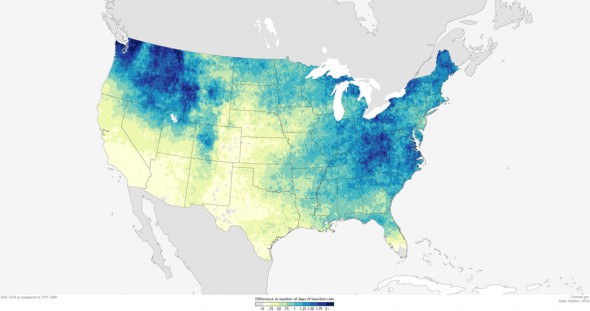

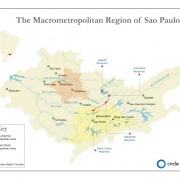

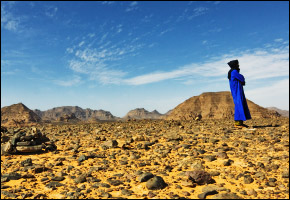
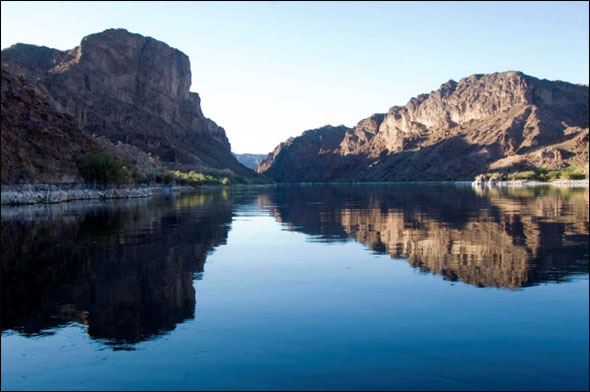



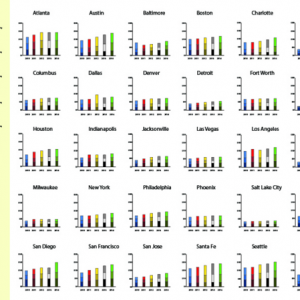
Leave a Reply
Want to join the discussion?Feel free to contribute!